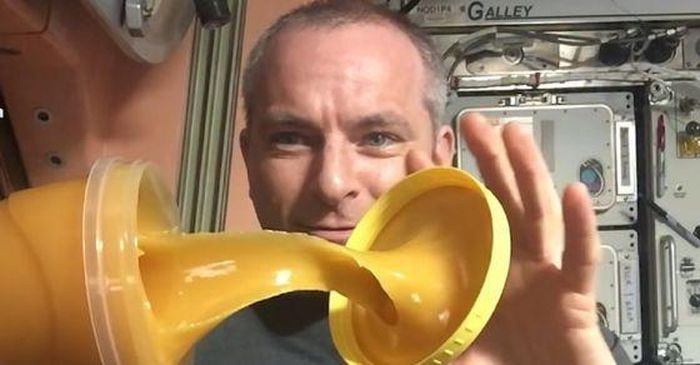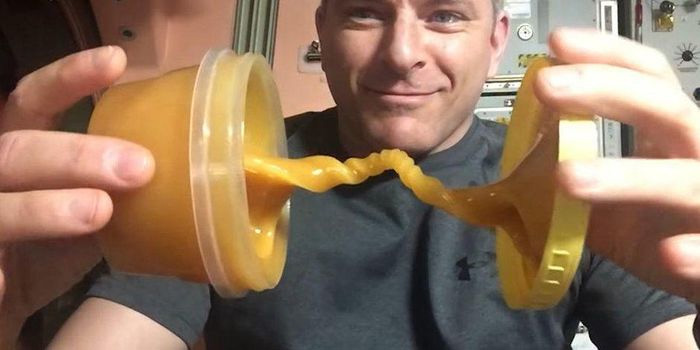A Canadian Space Agency astronaut shares an intriguing video showcasing the strange movement of honey in space.
Have you ever wondered what it would be like if someone opened a jar of honey in space? In a weightless environment, all solid and liquid objects behave differently.

Astronaut David Saint-Jacques opens a jar of honey in space
David Saint-Jacques, an astronaut from the Canadian Space Agency, shared an interesting video about the movement of honey while working on the International Space Station (ISS).
David Saint-Jacques said: “I will show you the strange behaviors of honey in a weightless environment. Odd things happen when you break the force of gravity.”
David slowly opened the lid of the honey jar and gently pulled it out. The blob of honey elongated and did not fall. He let the jar of honey float freely. A few seconds later, David shook the jar and lid, and the honey not only remained intact but also created gentle movements, twisting together.

The honey twisted without falling out on the International Space Station (ISS)
The video attracted attention from netizens, with some leaving humorous comments under David Saint-Jacques’s post. “Space is amazing. I love things like this,” “I would play with honey all day and forget about work,” “It’s worth spending millions of dollars to witness experiments like this,” netizens commented.
David Saint-Jacques was selected as a rare astronaut from over 5,000 applicants. He later moved to Houston to join NASA’s 20th astronaut class. His time working on the International Space Station (ISS) lasted six months.
Scientists are interested in how different liquids react in a weightless environment to study and improve designs for fuel containers and other liquid-related systems used in space travel.
Previously, in 2013, Canadian astronaut Chris Hadfield demonstrated what happens if you cry in space. In the experiment, he couldn’t cry directly, but he brought water to his eyes to simulate tears for viewers to see what would happen.
Chris Hadfield noted that tears would form into water bubbles sticking to the face, floating around. If not wiped away, the tears would accumulate into a large mass like gigantic bubbles. In a weightless environment, you can cry, but the tears won’t fall on their own.





















































